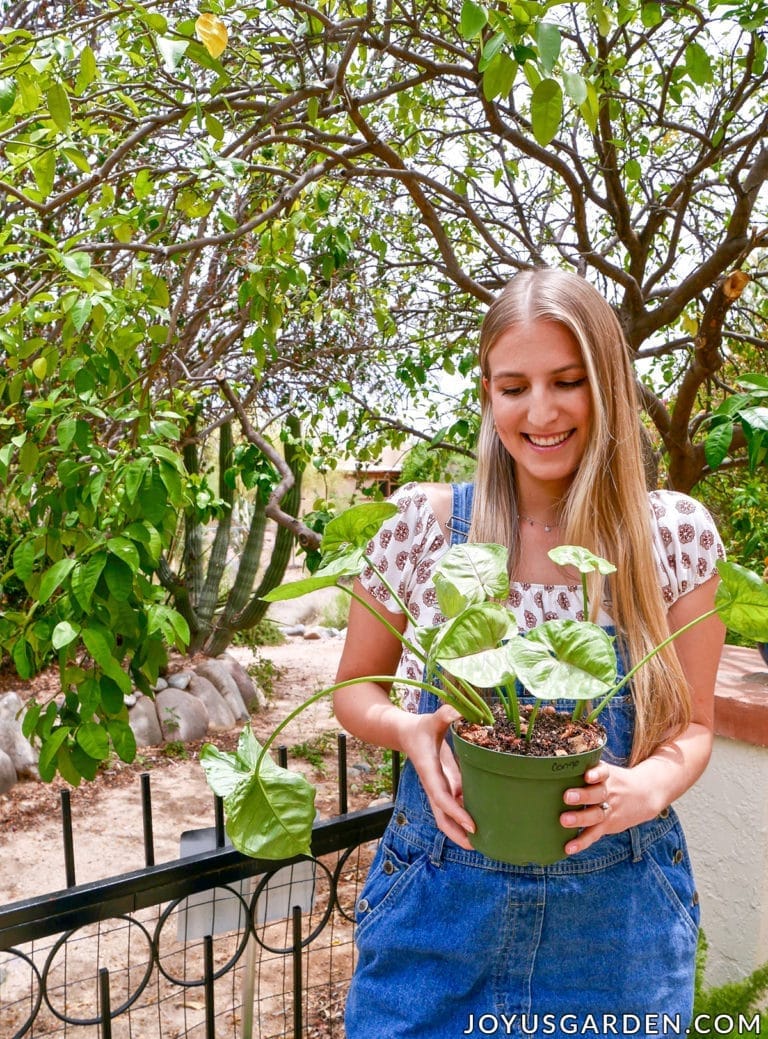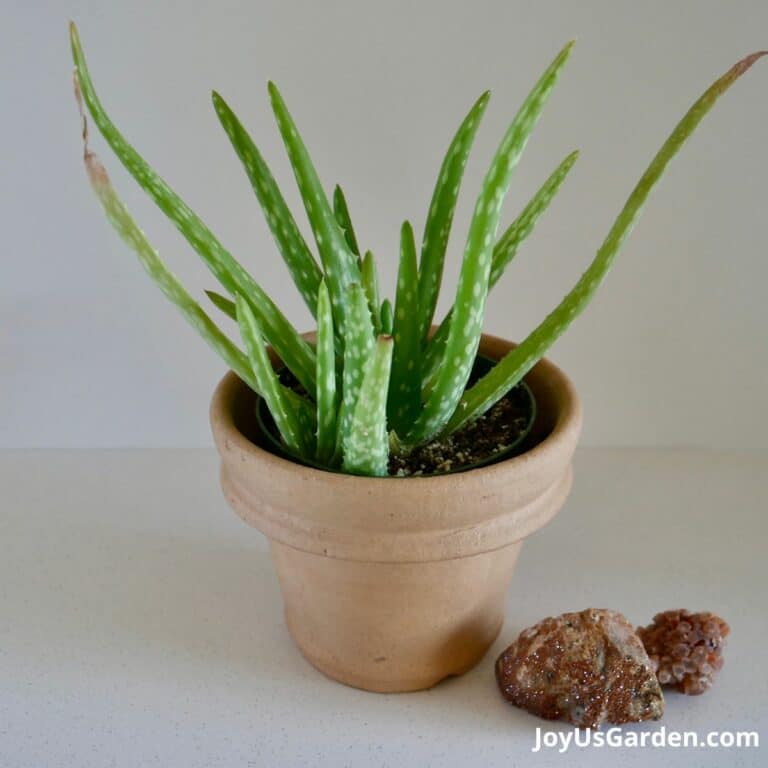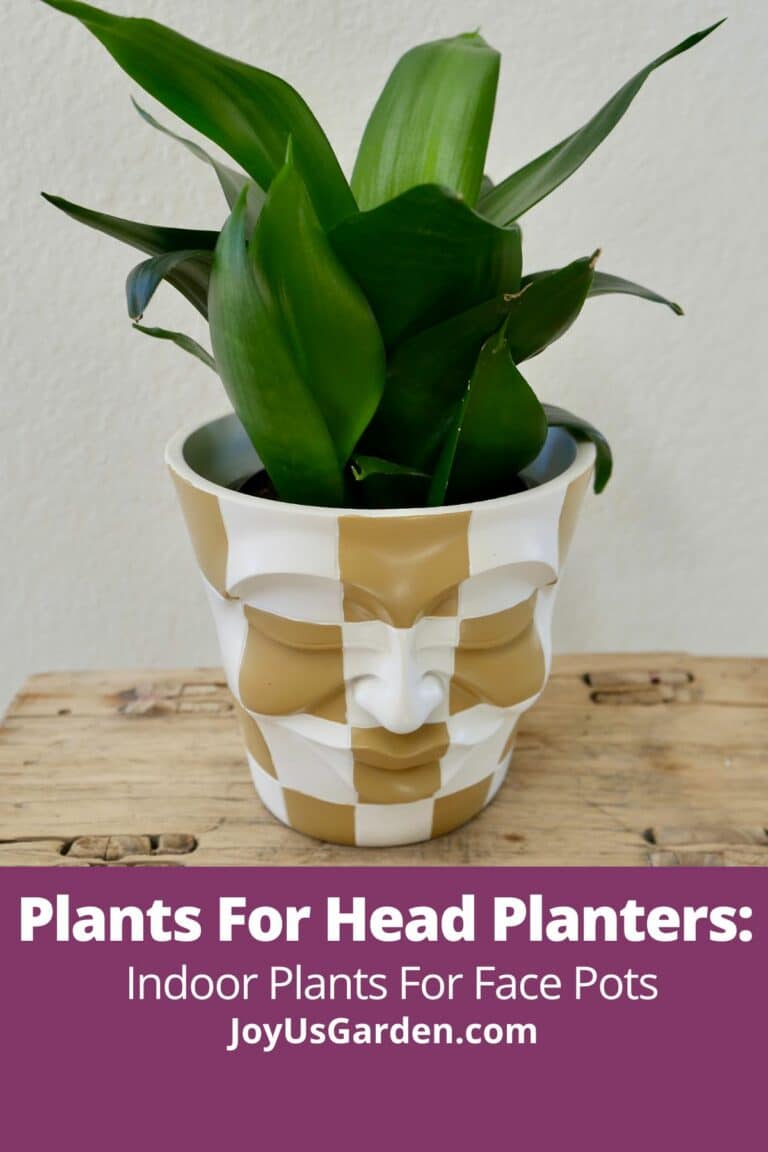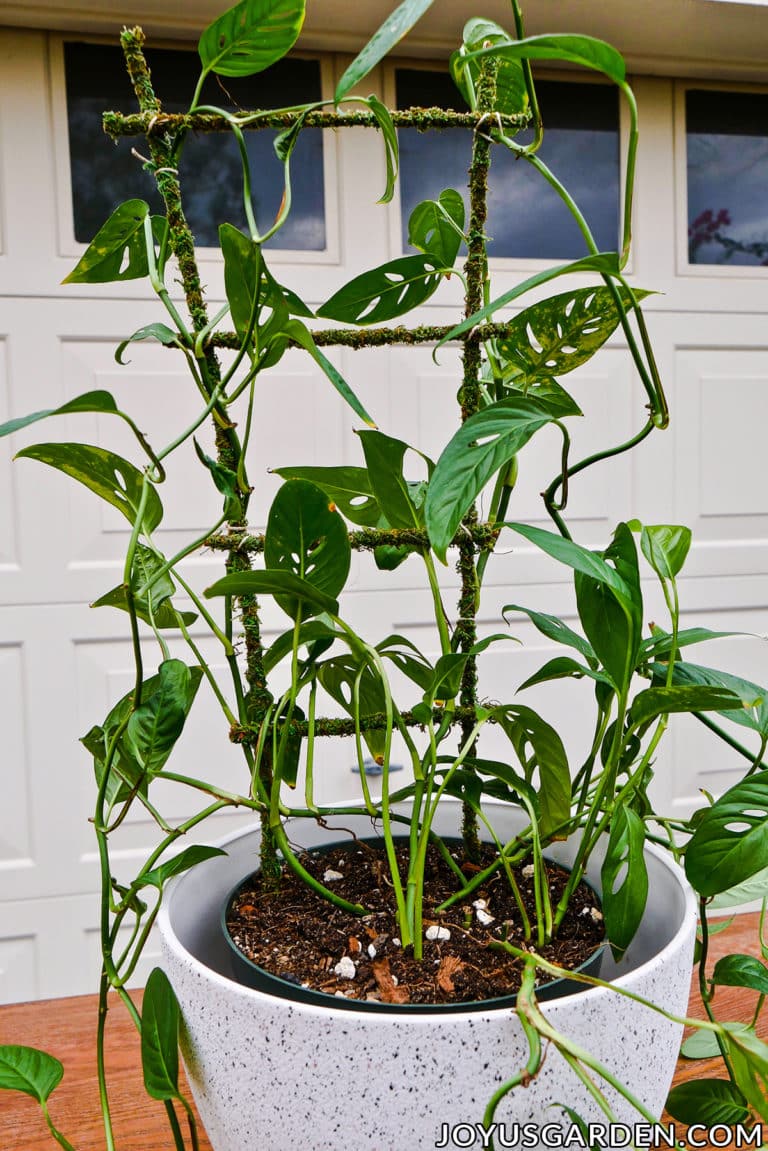Mandarin Plant Care: How to Grow Chlorophytum Orchidastrum
If you’re into colorful houseplants, look no further. This plant with neon orange accents really can brighten up our indoor spaces. Here are Mandarin Plant care and growing tips to keep yours healthy and vibrant.
The fancy botanic names for a Mandarin Plant are Chlorophytum orchidastrum Fire Flash and Chlorophytum amaniense Fire Flash. You may also see one called Orange Spider Plant, Fire Flash, Mandarin Spider Plant, Mandarin Orange Spider Plant, and Green Orange Spider Plant.
This is a close relative of the Spider Plant (Chlorophytum comosum) and shares the same genus. Even though they don’t look alike, they do share similar characteristics.
They have the same fleshy rhizomatic roots, growing conditions, adaptability, a tendency towards brown leaf tips, and are easy to care for. They differ in one thing the Spider Plant is known for – propagation via the pups (babies).
Mandarin Plant Traits
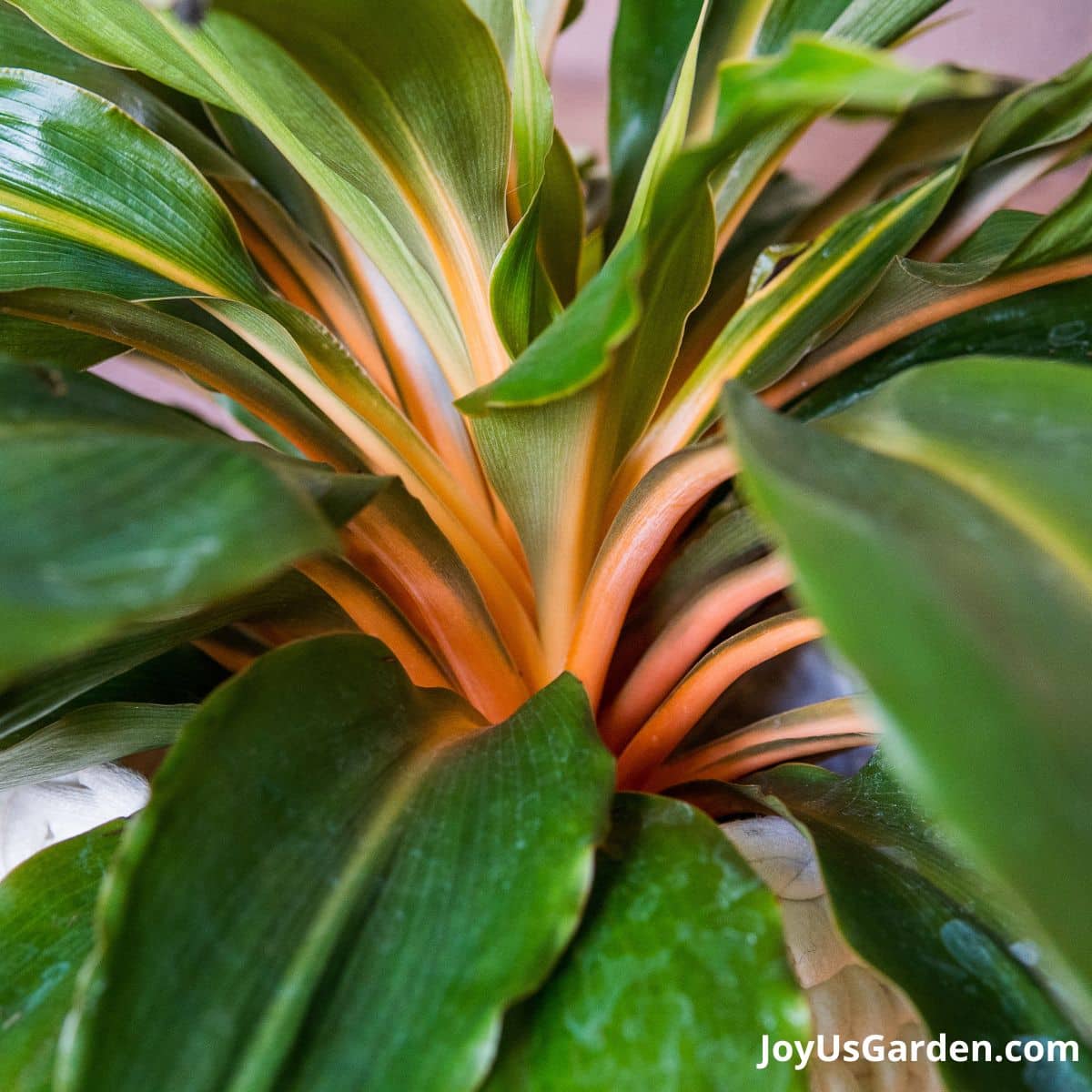
Size
Mine, including the 6″ grow pot, is 24″ wide x 17″ high. When I repot it into an 8″ pot, it’ll get a bit wider.
Growth Rate
Slow to moderate, depending on the growing conditions.
Uses
Tabletop. The best place for this plant is somewhere you can look down on it to see the colorful orange leaf stems.
Here are some of our houseplant guides you may find helpful: Watering Indoor Plants, Repotting Plants, Fertilize Indoor Plants, How to Clean Houseplants, Winter Houseplant Care , How to Increase Humidity for Houseplants.
What’s to Love
Easy! I think this is pretty obvious, but I’ll state it anyway. Those bright orange stems (which are technically bright orange petioles) are the big draw.
Mandarin Plant Care Video Guide
Mandarin Plant Care & Growing Tips
Exposure/Light
They prefer bright indirect light, near but not in a west or south window.
Prolonged periods of direct sunlight and/or touching hot glass will cause the plant to sunburn. Mine grows in my living room about 6″ away from a large north-facing window.
I live in Tucson, AZ which is 1 of the sunniest cities in the world. Your plant might need the light of an east, west, or south exposure to keep it looking good.
I imagine that in low light levels the bright color of the stems would fade.
In the winter months, you may have to move your Mandarin Plant to a brighter spot so it gets the bright light it needs. Here are more tips on Winter Houseplant Care.
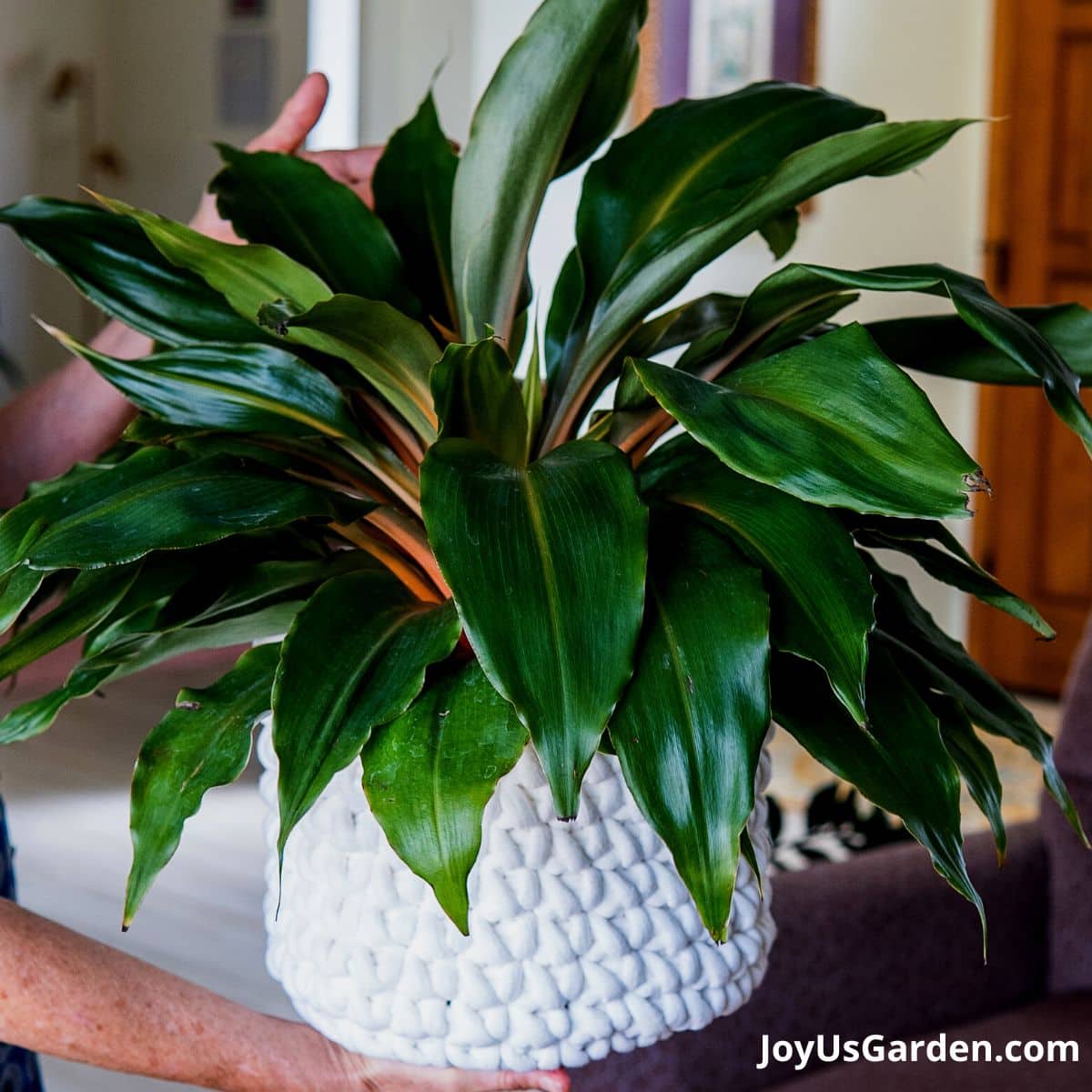
Watering
Mandarin Plants have low to average water needs. I water mine when it’s dry or almost dry. Be sure to let the water drain through the pot, and if there’s a saucer under it, don’t let it sit in any built-up water.
Depending on how warm and bright your house is, watering might be every 10-21 days. I really can’t tell you how often to water your Fire Flash Plant because many variables come into play. Here are a few: the pot size, the location where it’s growing, the type of soil it’s planted in, and the environment of your home.
I water my Mandarin Plant in a 6″ pot about every 5-7 days in the summer and every 7-12 days in the winter.
The thick fleshy root system of a Mandarin Plant stores water. Don’t keep yours too wet or the plant’s roots will succumb to root rot.
The bottom of the pot should have one or more drainage holes. This allows any excess water to flow right out. A well-drained soil will help with this also.
If your tap water is high in salts and minerals, consider using rainwater or distilled water. Mandarin Plants, like Spider Plants, are sensitive to minerals, especially too much fluoride.
I have a tankless r/o water filtration system in the kitchen that puts the good minerals back in. This is what I water all my houseplants with.
Looking for more info on watering houseplants? Be sure to check out How to Water Indoor Plants
Temperature
If your home is comfortable for you, it’ll be so for your houseplants too. Keep your Fire Flash Plant out of any cold drafts and away from direct blasts from heating or air conditioning vents.
Humidity
These plants are native to subtropical and tropical regions (the rainforests of East Africa). Even though tropical plants prefer high humidity, Mandarin Plants are adaptable to a wide range of humidity levels. They do fine in our homes which tend to have dry air.
The humidity here in the desert can be as low as 10%. My Mandarin Plant has tiny brown tips because of this.
I have a humidity meter in my dining room. It’s cheap but does the trick. I run my humidifiers when the humidity reads low (below 30%), which is very often here in the Arizona desert!
Every month or so, I take mine to my deep kitchen sink and give the foliage a good shower. It also helps to keep those lush green leaves clean.
If you think yours look stressed due to lack of humidity, here are a couple of other things you can do to help it out. Fill the saucer your plant sits on with pebbles and water. Put it on the pebbles but make sure the drain holes and/or the bottom of the pot aren’t submerged in water.
Misting your plant every few days will help a bit too.
We have a complete guide on Plants and Humidity that might interest you.
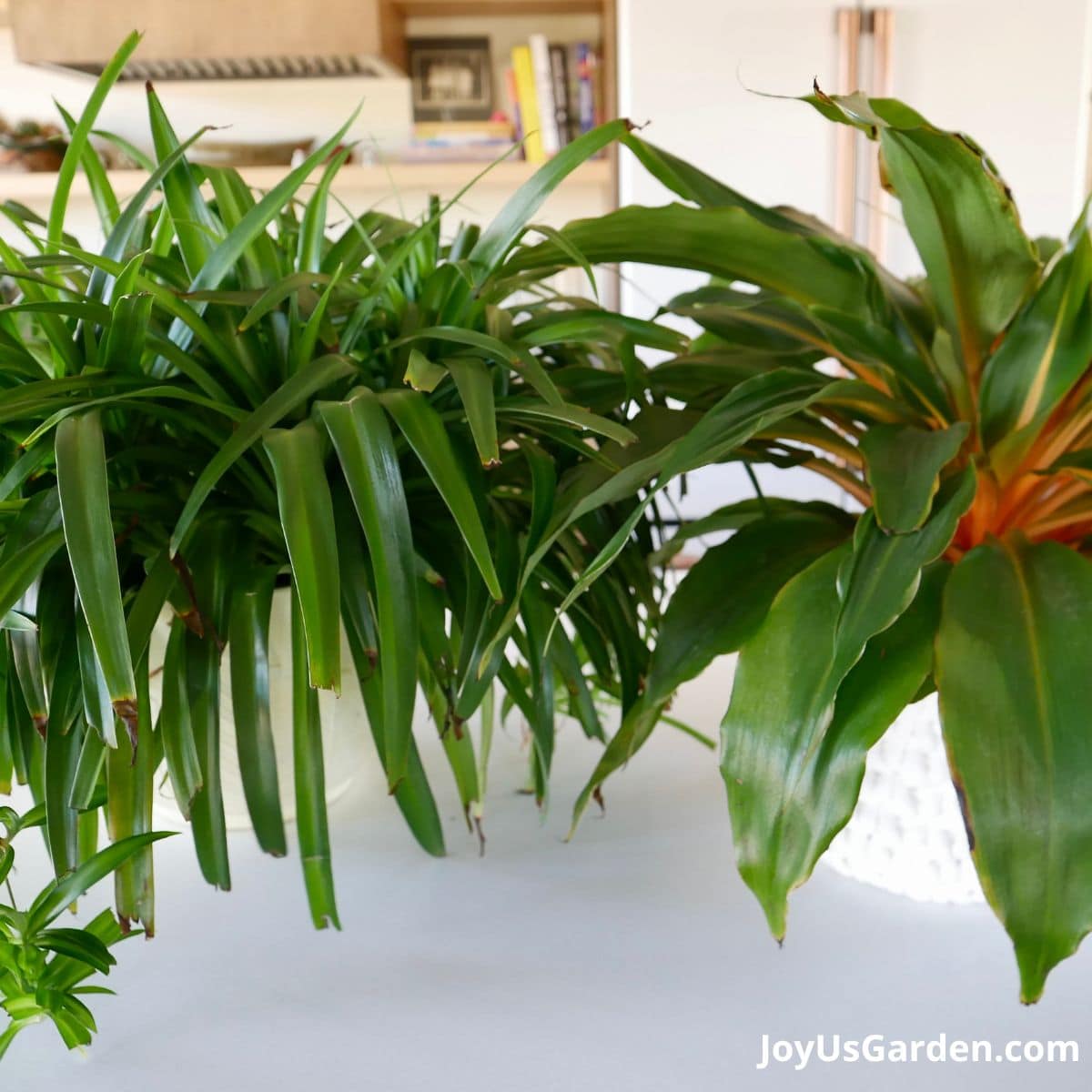
Fertilizer
Every other spring, I give most of my houseplants a light application of worm compost with a light layer of compost over that. Easy does it – a 1/4 ” layer of each is enough for a 6″ size houseplant. Read about my worm compost/compost feeding right here.
I used to give my houseplants a watering with Eleanor’s vf-11 three times during the summer, summer, and early fall. Online orders of this product are delayed now because of the 2022 supply chain issue but keep checking back if you can’t find it locally.
I’ve now substituted Grow Big for Eleanor’s and have been happy with that so far.
Alternately, I feed with liquid kelp or Maxsea three times. We have a long growing season here in Tucson.
Other options you might consider are would be this kelp/seaweed fertilizer and Joyful Dirt. Both are popular and get great reviews.
As I’m writing this, it’s December. Next spring, I’m adding Superthrive to the feeding program.
Feeding two times per year may do it for your indoor plants. Don’t over-fertilize because salts can build up and lead to root burn.
Just like the common Spider Plant, this one is sensitive to salt. Too much will show up as brown tips and/or brown spots on the leaves if you use too great a ratio or fertilize too often.
For this reason, I feed my Mandarin Plant four times during the growing season instead of six to seven times for most of my other indoor plants.
Avoid fertilizing a stressed houseplant, i.e. one that’s bone dry or soaking wet.
Our complete Guide to Fertilizing Indoor Plants will be a good reference for you.
Soil / Repotting
Mandarin Plants aren’t too fussy when it comes to their soil mix. Using high-quality potting soil labeled for houseplants or indoor plants is a good idea. Make sure it has good drainage and doesn’t hold too much water.
Black edges will eventually appear on the leaves if your soil mix is too heavy and stays too wet.
The mix I’ll use for my Mandarin Plant is a blend of 1/3 potting soil, 1/3 coco coir, and 1/3 pumice. I toss in a couple of handfuls of compost as I plant and top it all with a thin layer (about 1/2″) of worm compost and compost.
Mandarin Plants, like Spider Plants, like being a bit potbound, so don’t rush to repot yours. Every four to five years will be fine. Mine has thick roots growing out of a few drain holes, and it’s getting to be a good size, so in March or April, I’ll repot it.
Because this plant doesn’t get too big when growing indoors, I’ll go up one pot size from a 6″ pot to an 8″ pot.
Spring, summer, and early fall are the best times to repot.
Here’s our General Guide to Repotting Plants with basics helpful to beginning gardeners.
Pruning
This plant grows thick with foliage. Every month or two I remove any spent old leaves growing at the base of the plant. The newer foliage eventually crowds the oldest foliage turning it yellowish.
It’s good practice to keep your Pruning Tools Sharp (and clean) before you do any pruning.
Propagation
Unlike the good old-fashioned Spider Plant, this one doesn’t propagate by producing pups (babies) at the end of long, arching stems.
I’ve never propagated one, but I have heard a successful method is by seed.
I don’t plan on propagating mine, but if I were going to, I’d divide it. There are two separate stems in the pot, and I think I could easily pry them apart and repot each into 6″ grow pots.
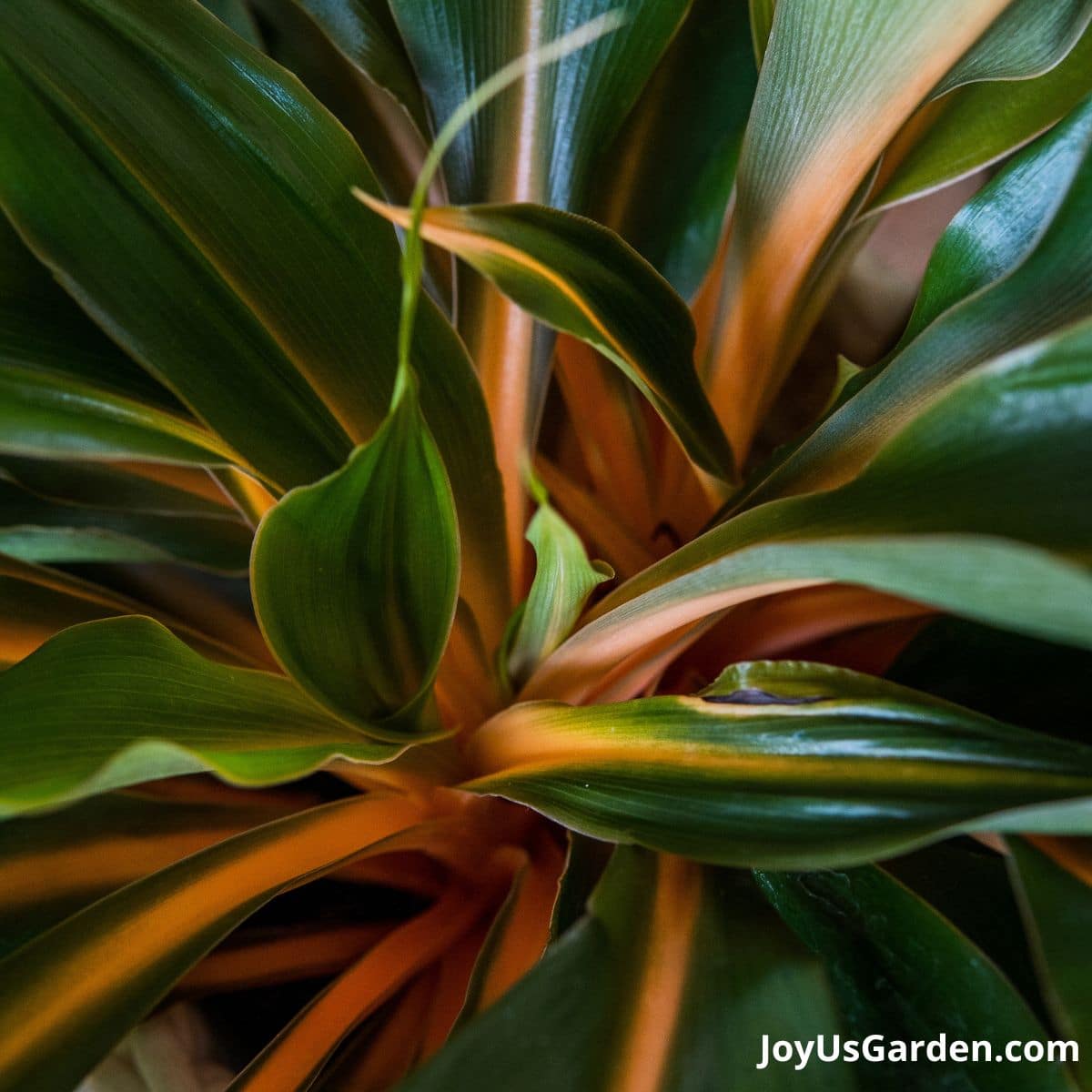
Pests
I haven’t had an issue with my Fire Flash Plant and pests (yet, anyway!). Like Spider Plants, I’d assume they’re susceptible to scale, aphids, and mealybugs. Those pesty but harmless fungus gnats will appear if any of your plants are consistently wet.
Pests can travel from plant to plant fast and multiply practically overnight, so ensure you get them under control as soon as you spot them.
I’ve talked about Mealybugs, Scale, Aphids, Spider Mites, and Fungus Gnats before, so you can identify these pests and treat your plants accordingly to get rid of them.
Pet Safety
I don’t have an exact answer for you on this. According to the ASPCA, I know that the Spider Plant is non-toxic, so I’m assuming its cousin, the Mandarin Plant, is also.
For your peace of mind, do a little research on your own.
Flowers
They appear on spikes that emerge from the center of the plant. The flowers are small and creamy white/yellow/green in color.
This plant with beautiful leaves is easy to care for but not easy to find. And doesn’t your home decor need a colorful houseplant with a touch of orange?!


